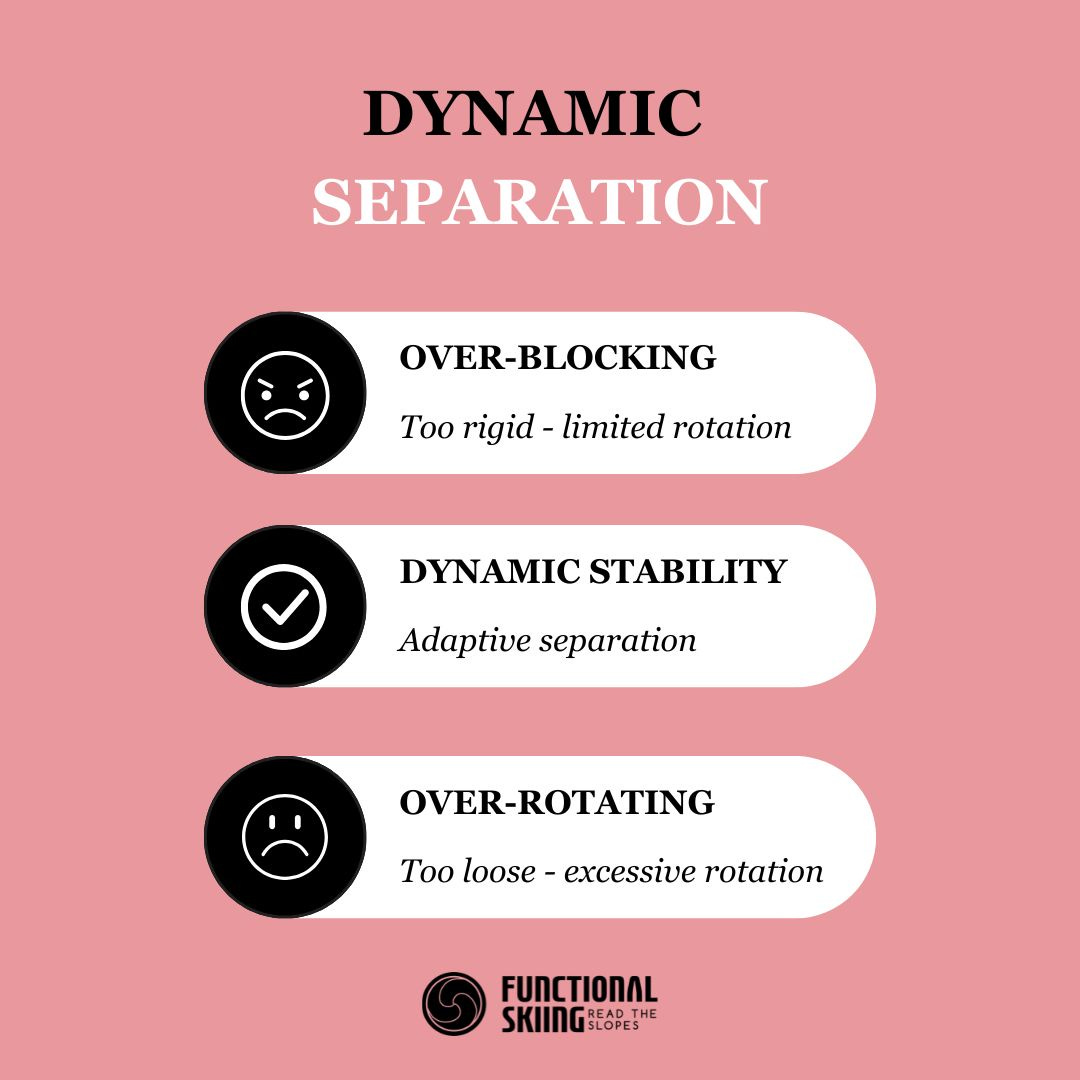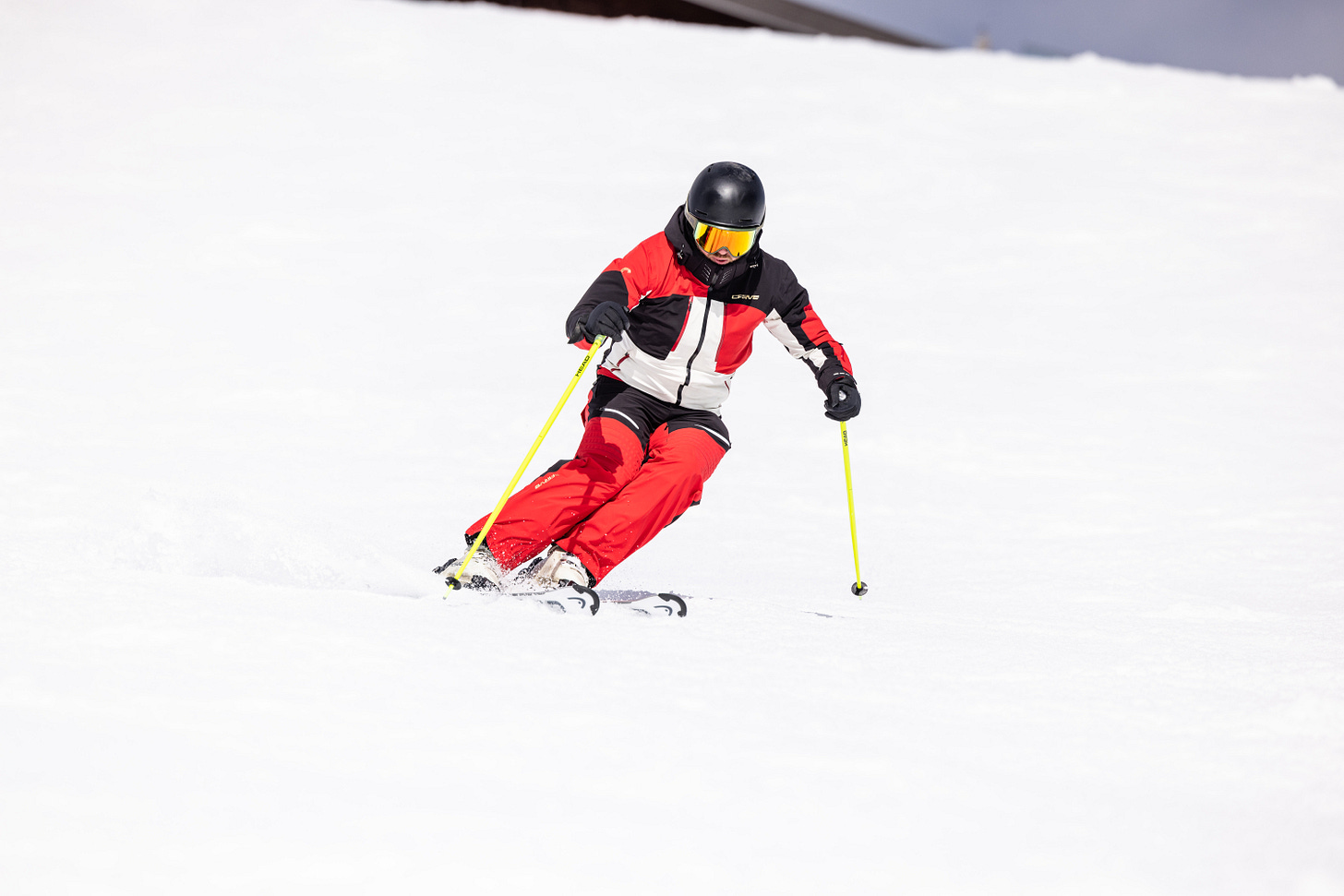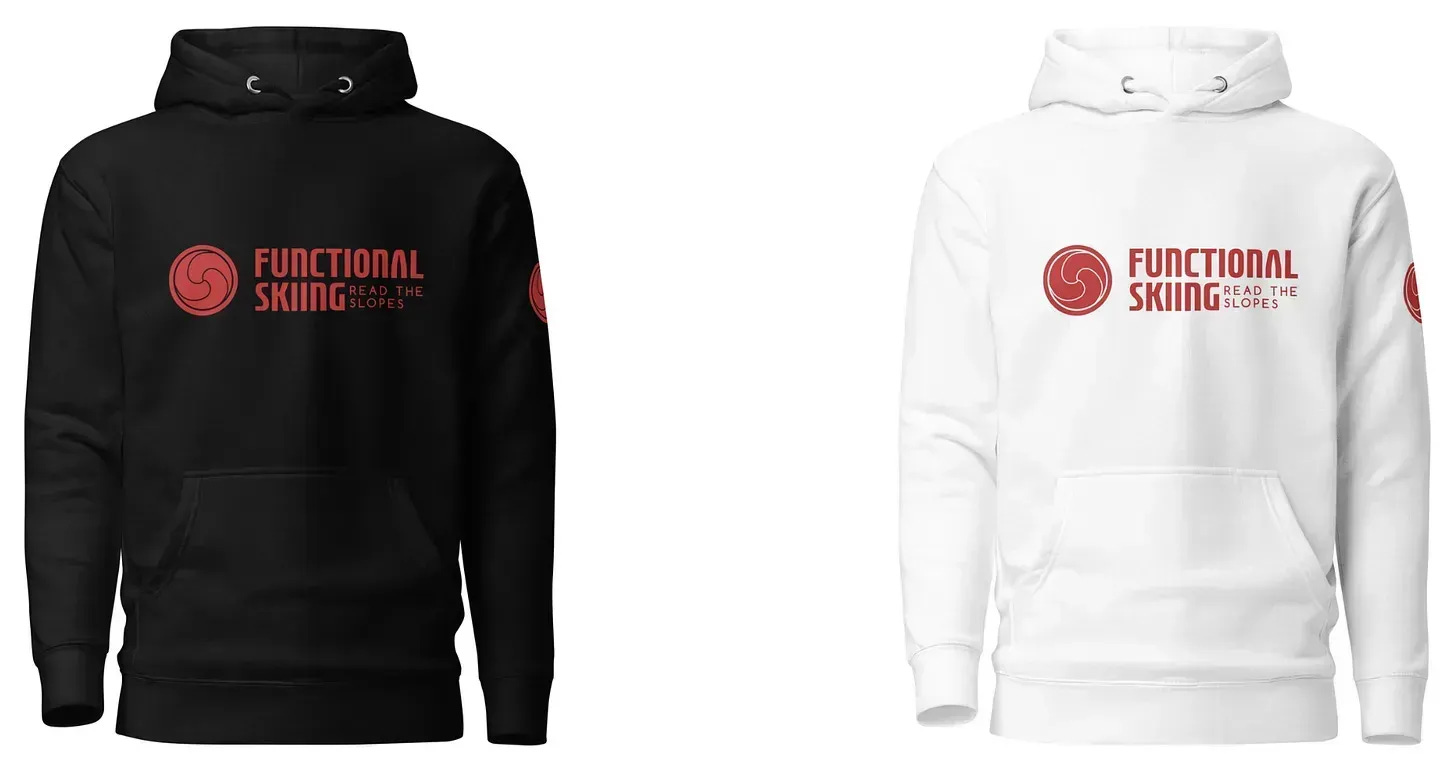In technical skiing, strength is never about stiffness — it’s about dynamic stability. Nowhere is this more critical than in short turns at speed, where rotational separation between the upper and lower body dictates whether you ride the line cleanly or spiral into chaos.
Yet, many skiers misunderstand separation. Traditional models emphasized strict blocking — locking the torso into the fall line. While this achieved surface-level stability, it often created rigidity, choking off fluidity and responsiveness.
Today’s high-level skiing demands a smarter, more adaptable approach: blending stability with controlled mobility.
Rigidity builds statues, not skiers. Fluid stability wins the mountain.
Stability Without Rigidity: The New Separation Strategy
Rotational separation must be progressive, not absolute. The upper body stabilizes against the forces generated by the lower body without freezing in place. True control comes from tension management, alignment, and the intelligent flow of movement — not from brute force.
Think of it this way:
Too much blocking = tension overload → decreased ankle freedom, compromised edging.
Too much following = excessive upper-body rotation → instability, loss of ski engagement.
The mastery lies in managing the sweet spot: using just enough separation to stay centered and agile without locking yourself out of dynamic movement.
The sweet spot in skiing is where discipline meets adaptability.
Hockey Stop Drills to Build Dynamic Upper Body Control
Hockey Stop Progressions:
Before we can own rotational separation, we need to expose where it falls apart.
Basic Hockey Stops reveal the natural reactions of the upper body under sudden deceleration.
Aggressive Hockey Stops push stronger edging demands — testing whether the torso can stay calm while the legs do the work.
Javelin Hockey Stops crank up the challenge: crossing one ski over the other forces the lower body to rotate while the upper body holds alignment.
Falling Hockey Stops:
The final progression, Falling Hockey Stops, takes separation training a step further — quite literally toward the snow.
Here’s how to perform them:
Begin in a solid hockey stop, skis across the fall line, upper body facing downhill.
From this position, rapidly flex the inside (uphill) leg, shortening it aggressively under your body.
This quick inside flexion causes you to tip and fall inward, toward the snow. Allow your inside hand to brush or even lightly touch the snow — encouraging comfort with deep, dynamic balance positions.
As you perform the fall, experiment in two ways:
First, actively block the upper body from rotating with the skis — hold it square to the fall line.
Second, let the upper body follow the skis naturally through the movement.
What you’ll feel:
Blocking offers external stability but locks up the ankle and hip joints, limiting your dynamic options.
Following increases fluidity but can destabilize you if it's uncontrolled.
Key takeaway: Neither pure blocking nor pure following is ideal.
Dynamic skiing demands a blend — maintaining enough discipline to stay stacked and stable, but enough freedom to flow with the forces at play.
Finding Your Sweet Spot
Ultimately, separation isn’t a rigid rule — it's a responsive tool. In steeps, at speed, or during sudden rhythm changes, the amount of separation must shift dynamically.
Ask yourself:
Where does my skiing feel strongest and most stable?
Where does unnecessary tension creep in?
Am I allowing just enough freedom to maximize performance without losing control?
The upper body doesn’t command skiing. It channels and refines it. Master this balance, and you'll unlock stability that adapts, flows, and holds — no matter the terrain or the speed.
Train smart. Feel the difference. Own your flow.
🎿 Ride. Represent. Protect.
Functional Skiing hoodies are here — bold, clean, and built for those who live it.
Black or white. Adult and youth sizes.
Every purchase fuels technical skiing and climate action. 🌍
Gear up. Lead the way. 🔥








